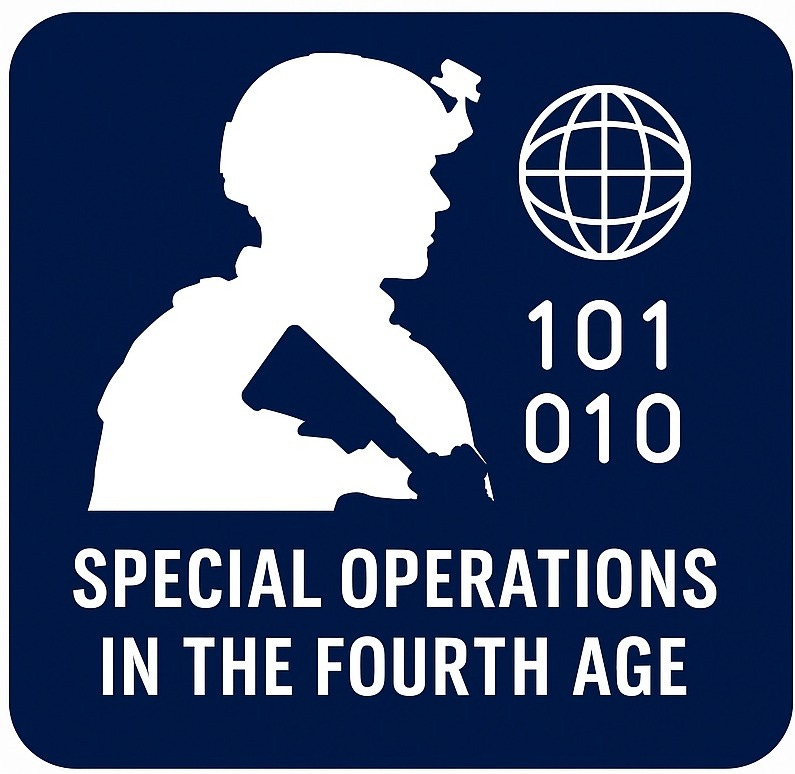OSS Reimagined: The Case for a 21st-Century Strategic Integration Force
Day 4, Ep.6: A historical argument for future force design.
OSS Reimagined: The Case for a 21st-Century Strategic Integration Force
A historical argument for future force design
“The OSS didn’t just gather intelligence. It created strategic effects. It was SOF before SOF. Intel before the IC. Influence before InfoOps. It was convergence—before we had a word for it.”
— Dr. Isaiah “Ike” Wilson III
🕰️ Origins of a Hybrid Genius
In 1942, the U.S. created something wholly new: a wartime entity combining paramilitary action, intelligence gathering, psychological warfare, and guerrilla operations under a single, agile, flat structure. Led by General William “Wild Bill” Donovan, the Office of Strategic Services (OSS) served as the direct ancestor to both CIA and U.S. Army Special Forces (Green Berets).
It was small, messy, unconventional, and brilliant.
The OSS built “Jedburgh Teams” to partner with resistance movements in Nazi-occupied Europe. It launched covert sabotage missions in Burma, Vietnam, and North Africa. It ran disinformation campaigns, built cultural expertise, and recruited polymath operatives—from Ivy League historians to Hollywood screenwriters.
Its essence? Integrated action and ideas. Strategic intelligence not in support of operations but embedded in them.
🧬 Why It Still Matters: The OSS DNA in Today’s SOF-IC Ecosystem
The OSS was disbanded in 1945. But its genetic imprint endures.
The CIA absorbed its human intelligence and covert action branches.
The U.S. Army Special Forces, born formally in 1952, inherited its unconventional warfare tradecraft and its ethos of partnership and autonomy.
Later, Joint Special Operations Command (JSOC) and Task Force Orange (aka Intelligence Support Activity) would refine its convergence model in the shadows.
Yet despite this legacy, the institutional fusion that defined the OSS has never fully returned.
In the age of bureaucracy, we've created silos: between action and analysis, between strategy and operations, between intelligence and influence.
And as the Fourth Age dawns—with its compound threats, ambient conflict, and narrative-centric warfare—we now confront a new strategic truth:
The future requires a force that reintegrates cognition, culture, capability, and consequence.
🧠 The Argument: We Need a 21st-Century OSS
This is not a nostalgic appeal. It’s a design proposal.
We need a modern Strategic Integration Force—a cross-domain, hybrid entity empowered to:
Conduct information-enabled unconventional operations
Shape strategic effects through campaign design, not episodic raids
Fuse SOF, IC, diplomatic, and commercial tools under unified planning
Operate ethically in ambiguous, gray zone environments
Manage narrative, legitimacy, and influence across time and space
This is not about centralization. It’s about coherence. About crafting an agile, strategic effects force for the world that is—not the world that was.
It would be a standing capability—not a wartime contingency. A capability built for an age where peace is porous, and where influence is power.
🛠️ Design Considerations
What would this look like?
A low signature, high-access organization—small, networked, and forward-deployed
Comprised of operators, strategists, analysts, technologists, and behavioral scientists
Reporting jointly to SOCOM, CIA, and NSC under a strategic integration mandate
Operating with compound authorities, modular task organization, and narrative synchronization
Embedded within key regional hubs and cross-functional campaigning teams
It would not replace SOF or IC. It would knit them together—at the seams where today’s conflicts unfold.
⚖️ Strategic Legitimacy and Risk
Of course, such a force would require rigorous oversight and clear ethical guardrails.
We are not proposing unchecked covert power. Quite the opposite.
We are proposing intentional integration—with rules, with accountability, with the ability to shape modern competition without defaulting to kinetic escalation.
It’s about strategic responsibility, not strategic risk.
🔚 Conclusion: History as Blueprint, Not Relic
The OSS was never meant to be permanent. It was a prototype—a glimpse of what hybrid power could look like.
We now live in a world that demands we evolve that model.
Not to fight WWII again.
But to shape a world where the next conflict is just as likely to begin with a deepfake, a supply chain breach, or a failed water governance regime, as it is with a missile.
The OSS was the First Age’s answer to total war.
A modern integration force must be the Fourth Age’s answer to total complexity.
📚 Historical Case Studies – Supplemental Segment
1. 🟦 OSS JEDBURGH TEAMS (WWII)
What: 3-man teams (SOF, intelligence officer, radio operator) parachuted behind enemy lines in France, Belgium, Holland
Mission: Organize, train, and lead local resistance; conduct sabotage and reconnaissance
Why it matters: This was the blueprint for today’s Foreign Internal Defense, partner force enablement, and combined unconventional warfare
Relevance today: SOF-IC pairing in Ukraine, Taiwan, and West Africa echoes the Jedburgh model
2. 🟩 MACV-SOG (Vietnam War)
What: Military Assistance Command – Studies and Observations Group
Joint SOF-IC task force conducting deep cross-border recon, psychological ops, and black operations
Why it matters: It pioneered joint SOF-IC plausibly deniable operations and high-risk reconnaissance
Relevance today: Mirrors the cross-border complexity of today’s transregional hybrid warfare
3. 🟧 TASK FORCE ORANGE / ISA (Post-9/11)
What: Elite intelligence-support SOF unit under JSOC
Specialized in signals and human intelligence, tactical targeting, and mission prep for high-value operations
Why it matters: Most refined modern echo of the OSS model—deep fusion of collection, action, and assessment
Relevance today: Shows that elite fusion can scale, but remains fragmented across authorities and stovepipes



